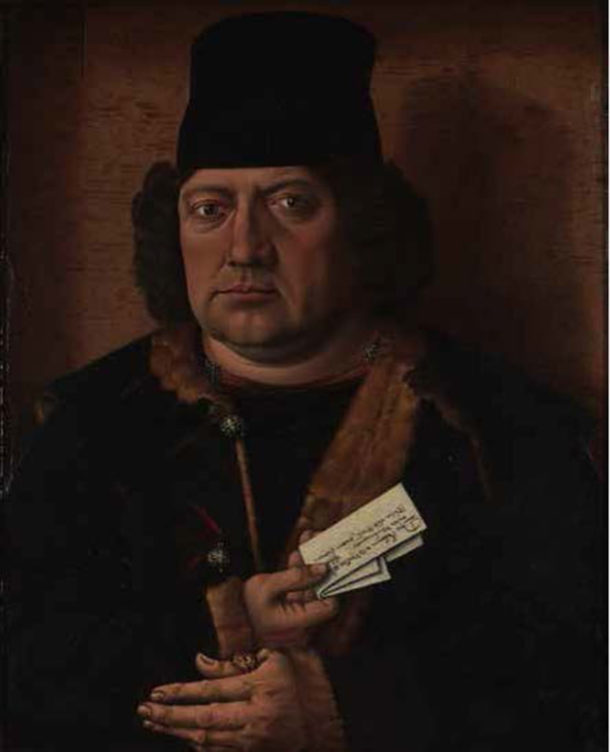
By Lewis Brown
© The National Gallery
by the Master of the Mornauer Portrait,
about 1464-88, Oil on wood, (45.2 x 38.7 cm)
Author/s: Rachel Billinge (The National Gallery, London, Part 1 of 3)
Art historians are interested in all aspects of how a painting was made and infrared reflectography is one of the tools used to help discover the early stages of a painting’s production.
This painting: “The portrait of Alexander Mornauer” is a good example of how IRR can reveal the first pictorial stage – the “underdrawing”.
Underdrawing is the name given to the stage when an artist begins to outline his painting on the canvas (or, as in this case, his prepared wood panel) fixing the design before applying the colour.
The man’s coat and hat now appear a dark brownish black but they were painted deep purple, using two pigments, red and blue, mixed together. The infrared light can pass through this paint to show what is beneath, which in this case is a simple, careful drawing made with a liquid paint using a brush. The coat is outlined and all the folds in the sleeves are drawn. the curves of the folds and the areas where shadows were to be depicted are indicated by short, curved, parallel strokes (known as “hatching”) sometimes crossing each other to make darker shadows.
The way IRR works, any black paint, anywhere in the painting structure, shows black in the image. The man’s hair and the fur of his collar are both painted brown using black mixed with red and so show black in the reflectogram. There are also some black patches on his sleeve and hat. These are areas where the original purple paint has been damaged and been restored using paint containing some black pigment.
The most important part of a portrait is the face and this also has underdrawing, similar in style with simple outlines and networks of hatching to indicate shadows, but it is more delicate and so less easy to see without enlarging a detail.
The hands too have been underdrawn, and looking at the man’s left hand we can see that the original plan was to have the thumb pointing downwards and the fingers disappearing into the coat.
It’s more prominent final position may be to ensure that the ring on his thumb was clearly visible.
Read more about this picture at: https://www.nationalgallery.org.uk/research/research-papers/close-examination/portrait-of-alexander-mornauer
